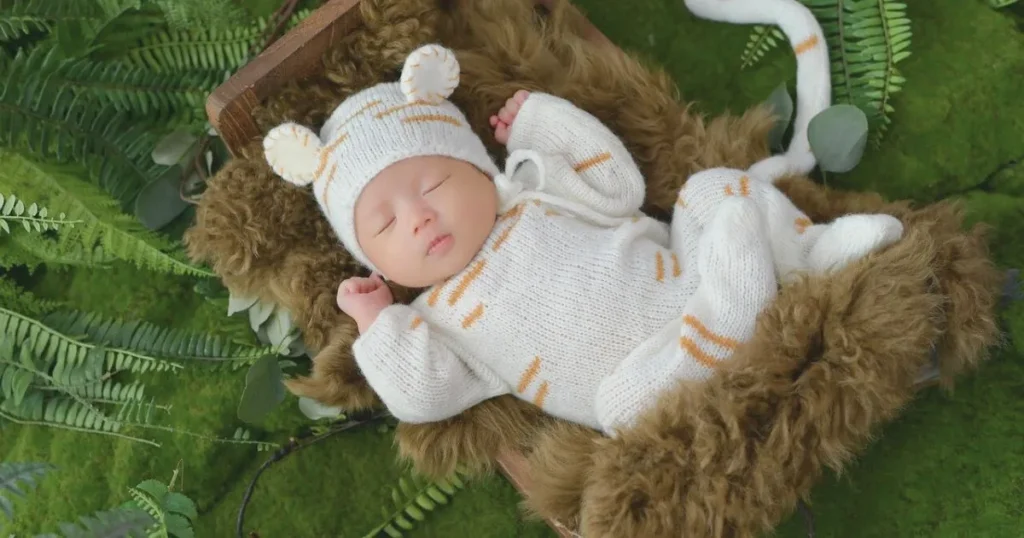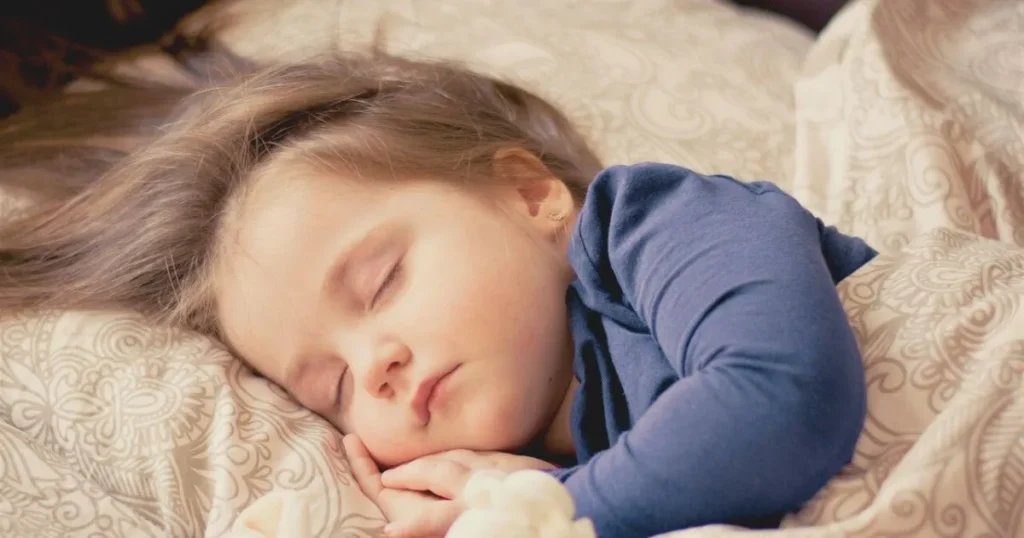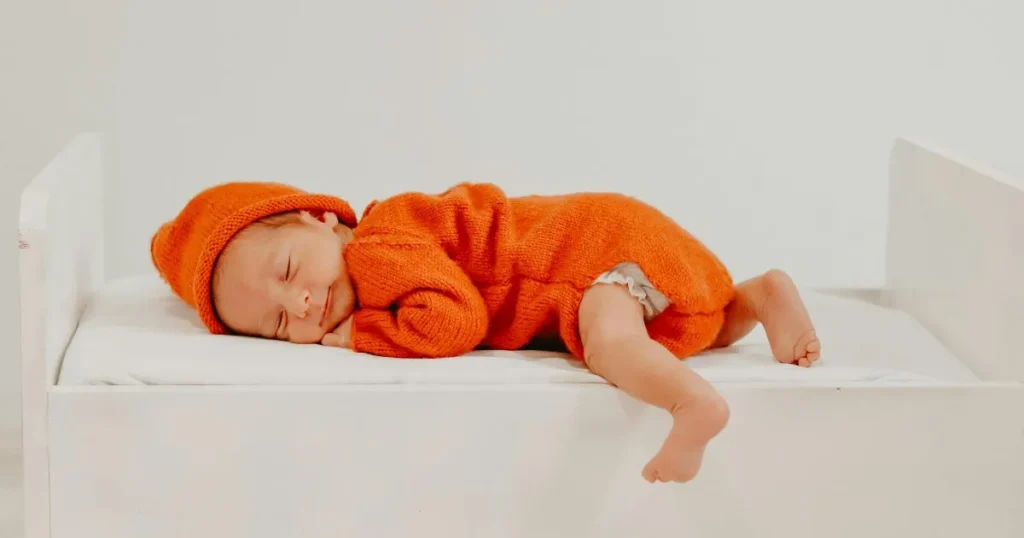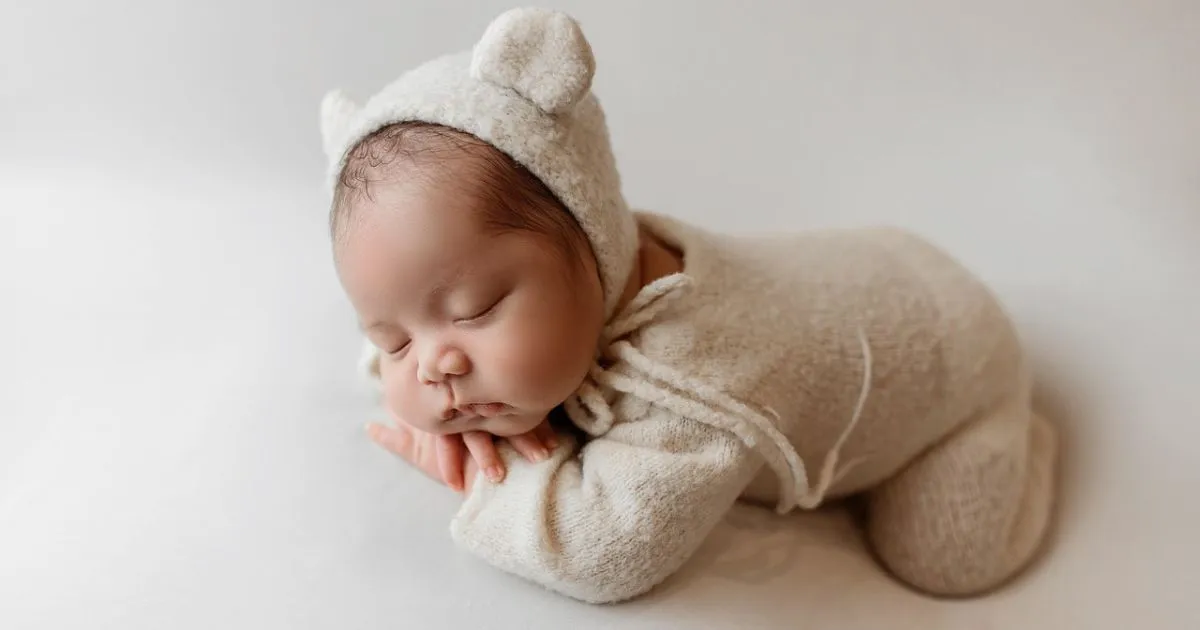How to Dress Baby for Sleep: Tips & Tricks
Table of Contents
How to Dress Baby for Sleep: Properly dressing your baby is crucial for their comfort and safety, and selecting the right sleepwear is essential for quality rest.

As a parent, you want your baby to sleep well. This means picking the right clothes for the room’s temperature. You should avoid making them too hot or too cold. Lightweight and breathable fabrics are best for warm weather. For cold climates, layering is a good idea.
Appropriately dressing your baby for sleep can help reduce the risk of issues like SIDS. It also helps them sleep better at night.
Key Takeaways
- Choose sleepwear suitable for the room temperature.
- Opt for lightweight, breathable fabrics in warm weather.
- Layer clothing in cold weather to maintain comfort.
- Avoid overheating or overcooling your baby.
- Promote a safe sleep environment.
Understanding Baby Sleep Safety Basics
Creating a safe sleep space for your baby is key. It’s important for their health and happiness. Two main things to focus on are keeping the right temperature and following safe sleep rules.
Temperature Regulation in Infants
Infants find it hard to control their body heat. It’s crucial to keep the nursery at a comfortable temperature. For your baby’s comfort, keep the room at a temperature of 68-72°F (20-22°C).
Dressing your baby in layers helps adjust to temperature changes. This keeps them cozy and safe.

Safe Sleep Guidelines for Babies
Safe sleep rules are essential to avoid SIDS and other dangers. The American Academy of Pediatrics suggests a few things. Babies should sleep on their backs on a firm mattress with a fitted sheet, without soft bedding or toys.
When choosing sleep clothes, avoid heavy blankets that can cause overheating. Opt for infant sleepwear recommendations that suggest lightweight, breathable fabrics.
How to Dress Baby for Sleep Based on Room Temperature
To make sure your baby sleeps well, dress them right for the room’s temperature. It’s key to dress your baby correctly for sleep. The room’s temperature plays a big role in how you should dress your baby for a good night’s sleep.
Using a Room Thermometer Effectively
A room thermometer is a great tool to find the perfect sleep temperature for your baby. By putting a thermometer in your baby’s room, you can check the temperature and adjust as needed. It’s best to place the thermometer near the crib for an accurate reading of the temperature around your baby.
Ideal Room Temperature for Baby Sleep
The American Academy of Pediatrics says the best room temperature for a baby’s sleep is between 68°F and 72°F (20°C to 22°C). Keeping this temperature range helps avoid overheating and keeps your baby comfortable all night.

Signs Your Baby Is Too Hot or Cold
It’s important to know when your baby is too hot or too cold. This helps you change their clothes to keep them comfortable while sleeping.
Physical Signs of Overheating
Indicators that your baby may be overheated include sweating, red cheeks, and rapid breathing. If you see these signs, you might need to take off a layer or adjust the room’s temperature.
Indicators Baby Is Too Cold
If your baby is too cold, they might have cool hands and feet, be fussy, or have a cold chest. To warm them up, add a layer of clothes or turn up the thermostat.
| Baby’s Condition | Signs to Look For | Action to Take |
|---|---|---|
| Too Hot | Sweating, flushed skin, rapid breathing | Remove a layer of clothing, adjust room temperature |
| Too Cold | Cool extremities, fussiness, cold chest | Add a layer of clothing, adjust thermostat |
Essential Baby Sleepwear Options
Dressing your baby right for sleep is key for their comfort and safety. Appropriate sleepwear ensures your baby’s body temperature remains well-regulated. It also prevents overheating and lowers SIDS risk.
There are many sleepwear options for your baby. Knowing the benefits and uses of each helps you choose wisely.
Swaddles and When to Use Them
Swaddling wraps your baby snug in a blanket for comfort and security. It’s great for newborns, but stop when they start rolling over for safety.
Sleep Sacks and Wearable Blankets
Sleep sacks and wearable blankets are safer than loose blankets. They keep your baby warm without covering their face. They have TOG ratings for choosing the right warmth level.
Footed Pajamas and Onesies
Footed pajamas and onesies are comfy for sleep. They come in many materials and thicknesses. Footed ones are cozy for cold nights, and onesies are good for layering.
Fabric Choices for Optimal Sleep
The material of your baby’s sleepwear plays a vital role in ensuring comfort and safety. Natural fabrics like cotton are breathable and soft on the skin, perfect for baby sleepwear.
Natural vs. Synthetic Fabrics
Natural fabrics let air flow better and are less likely to irritate the skin. Synthetic fabrics might be more durable but can trap heat and moisture, causing discomfort.
TOG Ratings Explained
TOG ratings show how warm sleepwear is. A higher TOG means warmer clothes. Picking sleepwear with the right TOG for the room temperature keeps your baby comfy.
Here’s a comparison of different sleepwear options based on fabric type and TOG rating:
| Sleepwear Type | Fabric Type | TOG Rating |
|---|---|---|
| Swaddle | Cotton | 2.5 |
| Sleep Sack | Bamboo | 1.0 |
| Footed Pajamas | Fleece | 3.0 |
Seasonal Guide to Baby Sleepwear
Keeping your baby comfortable at night means dressing them right for the season. As the weather changes, so should your baby’s sleep clothes. This guide will show you the best sleepwear for each season.
Summer Sleep Clothing Options
Summer calls for cool, light clothes for your baby. Choose fabrics like cotton. Short-sleeved onesies or light sleep sacks are perfect for hot nights. Make sure the room is cool to avoid too much heat.
Winter Sleep Clothing Strategies
Winter means keeping your baby warm with layers. Start with a onesie and add more like footed pajamas or a sleep sack. Always check your baby’s temperature to avoid too much heat.
Spring and Fall Transitional Clothing Tips
Spring and fall need flexible sleepwear as the weather changes. Use layers like short and long-sleeved sleepwear. Dress your baby in one more layer than you wear.
| Season | Recommended Sleepwear | Tips |
|---|---|---|
| Summer | Lightweight, short-sleeved onesies | Keep the room cool and well-ventilated |
| Winter | Layered sleepwear (onesie, footed pajamas, sleep sack) | Monitor baby’s temperature to avoid overheating |
| Spring/Fall | Layered clothing for temperature control | Dress baby in one more layer than you’re wearing |
Step-by-Step: How to Dress Baby for Sleep
Dressing your baby right for sleep is key for their comfort and safety. It’s a simple process that greatly affects their sleep quality. Getting it right is crucial.
The Layer Method Explained
The layer method is a smart way to dress your baby for sleep. It means dressing them in layers to adjust to room temperature. Start with a onesie as the base layer and add more as needed.
Diaper Change and Pre-Sleep Routine
A clean, dry diaper is a must before dressing for sleep. A consistent pre-sleep routine helps your baby know it’s time to sleep. This makes it easier for them to settle down.
Securing Sleepwear Properly
It’s important to secure your baby’s sleepwear for safety. Make sure all clothes are tightly fastened and free from loose threads. Sleepwear with zippers or snap buttons is best for easy fastening.
Checking Baby’s Comfort Level
Checking your baby’s comfort is essential. Feel the back of their neck or tummy to see if they’re too hot or cold. Adjust their clothes if needed to keep them comfortable.
Adjusting Throughout the Night
Be ready to adjust your baby’s clothes during the night. If they’re too hot or cold, change their layers. This keeps them at a comfortable temperature.
Special Sleep Situations
Special situations, like skin sensitivities or travel, need a special approach to baby sleepwear. These situations require extra care to keep your baby comfortable and safe while sleeping.
Dressing Baby with Eczema or Sensitive Skin
Babies with eczema or sensitive skin need gentle fabrics to avoid irritation. Choose soft, breathable materials like cotton or bamboo for their sleepwear. Stay away from synthetic fabrics or harsh dyes. Here’s a table to help pick sleepwear for sensitive skin:
| Fabric Type | Suitability for Sensitive Skin |
|---|---|
| Cotton | Highly Suitable |
| Bamboo | Highly Suitable |
| Synthetic | Not Suitable |
Travel and Sleep Clothing Considerations
Traveling with a baby means planning, especially for sleep clothes. Pack layers for your baby to stay comfortable in different temperatures. A portable, compact sleep sack is handy for travel. As a parenting expert says,
“The key to successful baby travel is preparation and flexibility.”
Transitioning from Swaddle to Sleep Sack
Switching from a swaddle to a sleep sack can be tough. Start with the sleep sack during nap time. Monitor your baby’s comfort level and adjust as needed. A slow transition helps your baby get used to the new sleepwear.
Common Mistakes to Avoid When Dressing Baby for Sleep
Dressing your baby for sleep can be tricky. There are mistakes that can make your baby uncomfortable or even unsafe. Knowing how to dress your baby right is key for a safe sleep environment.
Overdressing Dangers
One big mistake is overdressing your baby. This can cause them to get too hot, which is a risk for SIDS. To avoid this, use lightweight, breathable clothing that matches the room’s temperature. Dress your baby in one more layer than you wear.
Unsafe Sleepwear Choices
Choosing the right sleepwear is very important. Stay away from clothes with loose threads, small parts, or too loose fits because they can be dangerous. Instead, pick sleepwear that fits well and is made from breathable fabrics like cotton.
Ignoring Room Temperature Changes
Room temperature is crucial for your baby’s sleep safety. Watch for changes in room temperature and adjust your baby’s clothes to keep them comfortable. Using a room thermometer can help you keep the temperature just right.
Conclusion
Dressing your baby for sleep is very important. It helps keep them comfortable and safe. Knowing how to dress them right can make their sleep better.
Use the layer method to dress your baby. Choose sleep sacks or wearable blankets as the best sleepwear. Watch for signs that your baby is too hot or cold and change their clothes.
Following these tips can help your baby sleep well. It’s all about finding the right balance between comfort and safety. Always pay attention to your baby’s needs at night.
FAQ
What is the ideal room temperature for a baby to sleep?
The best room temperature for a baby’s sleep is between 68-72°F (20-22°C). Use a room thermometer to keep it just right.
How do I know if my baby is too hot or cold while sleeping?
Look for signs like sweating or flushed cheeks if your baby is too hot. For cold, check for cool hands or feet, shivering, or fussiness. Adjust their clothes as needed.
What type of sleepwear is recommended for babies?
Sleep sacks, wearable blankets, and footed pajamas are good choices. Pick breathable fabrics like cotton. Also, consider TOG ratings for warmth.
How should I dress my baby for sleep in different seasons?
In summer, choose lightweight sleepwear. For winter, use warmer clothes like fleece or sleep sacks. In spring and fall, use layers to adjust to temperature changes.
Can I use a blanket to keep my baby warm while sleeping?
No, it’s safer to avoid loose blankets in the crib. Use sleep sacks or wearable blankets instead.
How do I transition my baby from a swaddle to a sleep sack?
Start with the sleep sack during nap time or when you’re watching. Gradually switch over a few nights to help your baby get used to it.
What are some common mistakes to avoid when dressing my baby for sleep?
Don’t overdress or use unsafe sleepwear like loose blankets. Also, watch for room temperature changes to avoid discomfort or safety risks.
What fabric is best for baby sleepwear?
Natural fabrics like cotton are best for baby sleepwear. They’re breathable and comfortable against the skin.
Our Social Media

